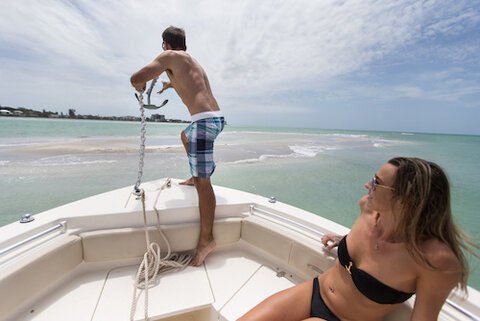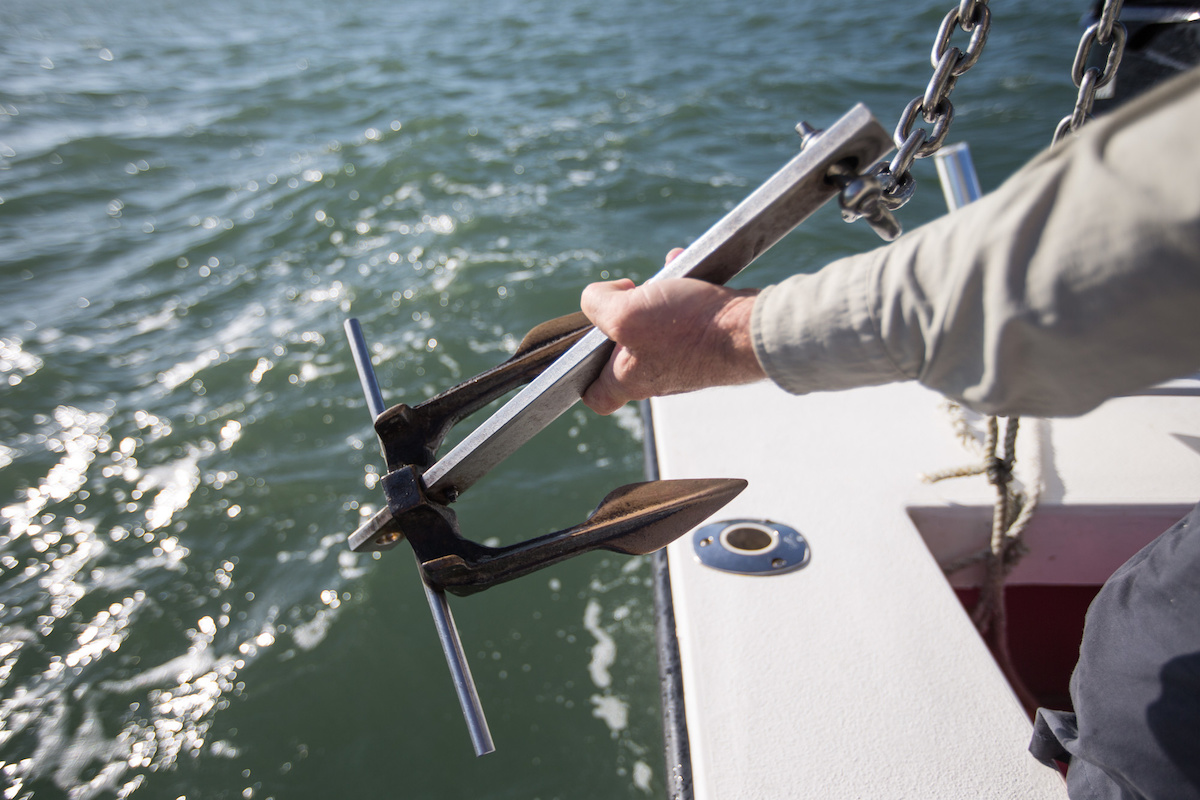Every boater eventually runs into those tricky situations. For example, perhaps you're battling unexpected currents during a saltwater fishing trip or trying to stay put in a crowded marina. That's when knowing how to double anchor your boat becomes essential!
Double anchoring isn't complicated, but it's exactly what it sounds like – using two anchors to secure your boat. And the beauty of this technique? It provides that extra stability when standard single-anchor setups just won't cut it.
In this guide, we'll walk through exactly when you should double anchor and show you how to do it right. We've used these techniques countless times in various conditions, and they've saved us from drifting into trouble more than once.
Why Double Anchor a Boat?
Let's cut to the chase about why double anchoring makes sense. Here are the situations where that second anchor isn't just nice to have - it's essential:
- Strong Winds and Currents: A single anchor might not have enough holding power in these conditions. Double anchoring your boat in powerful winds and currents prevents drifting or swinging out of control.
- Crowded Anchorages: In busy anchorages, your boat will likely swing back and forth. Double-anchoring a boat here is a great way to reduce the risk of accidental collisions.
- Unreliable Bottom Conditions: In soft mud, sand, or other materials without a lot of holding power, double anchoring your boat adds security.
Step by Step: How to Double Anchor a Boat
There are a couple of ways to double anchor a boat. One way is setting two anchors off the boat's bow. Another is setting one anchor off the bow and the second off the stern. And the technique you choose depends on the situation you're in!
Use the bow-only method when handling shifting winds or currents in open waters. Go with the bow-and-stern approach when you need to stay perfectly still in narrow channels or while anchoring overnight in tidal zones.
But, the most common technique is the Bahamian Moor. Here's how to set up this double anchor successfully:
Step 1: One Anchor into the Current
First, drop an anchor into the current, securing it normally. Then, back the boat up slowly to set the hook. You'll feel that satisfying tug when it grabs hold – like when a fish takes the bait, except this catch keeps your boat in place!
Step 2: Reverse the Boat
Next, continue backing up until you've created a distance about twice the length of your anchor rode.
Step 3: Drop the Second Anchor
Now, drop the second anchor directly down-current from your first one. This creates that perfect opposing tension you're looking for. It's like putting your boat in a comfortable hammock between two trees.
Step 4: Move to a Middle Position
Lastly, position your boat halfway between the two anchors. Give it a few minutes to settle and check that you're holding steady.
Both anchors should pull in different directions, like a well-balanced tug-of-war that keeps your boat right where you want it.
Tips to Prevent Line Fouling
- Avoid slack lines: If there's slack in the lines, the one not under load could drift into the running gear and cause issues.
- Switch anchor lines: Transfer the lines from the bow anchor chock to the forward deck cleats, leaving just enough slack to let the boat pivot smoothly.
- Use chafe protection: Depending on your boat's deck and cleat configuration, consider adding chafe protection to prevent damage to the lines.
Double Anchoring a Boat When Beaching
This helpful technique isn't limited to open-water anchoring. In fact, it's a great way to secure your boat when you're anchoring near shallow waters!
Taking a break from bass fishing or tubing? Beaching your boat with a double anchor is a safe, reliable way to keep it from drifting.
Here's how to double anchor when you're beaching your boat:
- Position Your Boat Near the Shore: First, approach the shore and drop the bow anchor in the water at a safe distance from the beach. This helps secure the front of your boat while you set up the second anchor.
- Set the Second Anchor: Once the bow anchor is set, step off the boat (or have someone else help you). Grab a second anchor, usually a spike-style, and carry it from the boat to the beach.
- Secure the Anchor to the Beach: The next step is to secure the second anchor to the shore. Finally, check that both anchors are firmly holding your boat in place.
Learning How to Double Anchor a Boat: Key Takeaways
When it comes to boating safety, double anchoring can be a game-changer in challenging situations. It's beneficial in heavy wind or strong currents and helps prevent your boat from swinging into neighboring boats in crowded anchorages.
Despite its importance, double anchoring isn't complicated to master. This technique provides stability and peace of mind in strong currents, crowded marinas, and shallow waters.
Follow the steps above, and you'll keep your boat secure and look like you know what you're doing – which is half the battle in boating!


